Corn Fun Fact: One acre of corn eliminates 8 tons of carbon dioxide from the air.
Topics:
– Growing Degree Day Update
– What’s going on in my fields?…..Corn Development, Disease, Crop Water Use….
– Corn/Soybean Insect Update
– Soybean Development – Disease and more…
As of July 28th, we have accumulated approximately the following for Growing Degree Days in 2020:
Planting Date GDD’s2020 Average GDD Departure from average
April 21 1760 1625 +135 (+5.5 days)
April 26 1707 1586 +84 (+5 days)
May 1 1656 1550 +78 (+4 days)
Since the last update on July 11th, we continue to run ahead of average GDU accumulation by 4-5 days. However, the 6-14 day temperature outlook is for much cooler temperatures (see maps below). In fact, forecasted temps look to be 8-10 degrees below the average over the next 7-14 days. If this plays out, we will lose whatever ground the crop has gained over the past month. This will be (like most everything), a pro and con….pro meaning no stress on the crop….con meaning greatly increased potential for diseases on corn and soybeans. More on this in the topics below.




The above maps show the current 6-10 day temp/ precip and 8-14 day temp/precip forecasts from the AgriTools app. You can see that much of the cornbelt will is expected to experience below normal temperatures and overall drier conditions over the next two weeks. Keep this in mind as you think about disease and overall crop water usage.
What’s going on in my field?
Most of the corn crop is in the R2 (Blister Kernel) stage to some early R3(Milk) stage. This is 7+ days ahead of 2019. Early indications are that overall pollination is good and very typical. However, expect to see some uneveness in pollination/silking due to the uneven emergence we saw this past spring.
- Blister Kernel occurs approx. 10-14 days after silking. Starch has begun to accumulate in the watery endosperm and the kernels are beginning a period of rapid, steady, dry matter accumulation that will continue until physiological maturity in approx. 50-60 days after silking.
- At Blister Kernel, maximum ear length is achieved. Although not as severe as at Silking, stress over the next two weeks can still have a profound effect on yield through kernel abortion.
- Kernel abortion from stress can occur through the Milk stage(18-22 days after silking), however when the plant reaches Dough, kernel abortion will no longer take place, and any yield reduction from then on out will be from lower test weight.
- Cooler temps during grain fill means less stress on the crop, which is a positive for high yields, as was mentioned above.
- As far as sunlight is concerned, we are currently running, believe it or not, 5% percent below normal over the last 14 days, or since silking started. Sunlight, of course, is now a much bigger yield factor, since we are now in the crucial grain fill period. As such, how much sunlight and when it occurs during the grain-fill period, will play a role in overall yield and late-season plant health. Lack of sunlight early in the grain fill period (i.e. right now) can lead to the ear tipping back as well.
- Extra stress will occur if sunlight is reduced and temps (especially nighttime) are higher than average. This stress occurs because, since temps are high (especially nighttime temps) the energy demand on the plant is higher than average; couple this with reduced photosynthesis, and this leads to greater energy in the plant just going to maintain itself and not to filling the ear. It is an axiom in corn production that when you have to run your air conditioner at night, it is not good corn growing weather. The past couple of weeks have seen somewhat higher than normal average lows, which has helped the crop to keep moving along.
- Relative Humidity over the past two weeks has been 10% higher than normal. This, coupled with average high temps in the upper 70’s to low 80’s, greatly increases the potential for leaf disease to develop, which is what is forecasted over the next two weeks. So far, we are now seeing quite a bit of Gray Leaf Spot start to show up in area fields, on the lower leaves, especially the corn-on-corn acres. There is a lot of bacterial leaf streak around now as well.
- We have just observed our first Southern Rust lesions this week. Photo is southern rust lesion west of Elgin…
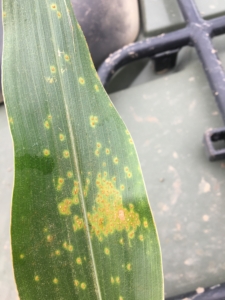 Keep an eye out for this disease, as it can be a fast mover and will impact yield if it takes off. https://www.pioneer.com/us/agronomy/southern_rust_cropfocus.html
Keep an eye out for this disease, as it can be a fast mover and will impact yield if it takes off. https://www.pioneer.com/us/agronomy/southern_rust_cropfocus.html - The forecasted temperatures will also increase the potential for Northern Corn Leaf Blight, a disease we normally do not see here but that can blow up in cool temps. https://www.pioneer.com/us/agronomy/northern_corn_leaf_blight_cropfocus.html
- The forecast for the next two weeks, will keep the likelihood of further development of these diseases on the increase. If we experience warmer temps than forecasted and/or sunlight is plentiful, the potential for impact from diseases will be reduced.
- Fungicide application should be on, or going on over this next week, for best yield response. You want to protect the plant when it is working the hardest, which is silking through milk stage. Fungicide will not help control bacterial leaf streak.
Average ET rates will continue to stay in the .25+ in/day through the Milk stage, so maintaining an adequate soil moisture profile will be key yet over the next two weeks or so. However, the lower temps that are forecasted over the next 10-14 days will keep ET rates lower than normal. As you think about irrigation needs over the next two weeks, keep temperatures in mind as we move forward to see what actually occurs to help reduce potential water stress or potential over watering.
Soybean Update
- Much of the crop is in the mid-R3(pod set) to R4(full pod) stage of growth. This is about one week ahead of average.
- Peak water use, nutrient demand, and overall energy demand in the plant occurs at R3 and into R4 stage….i.e. right now!
- ET rates in soybeans are at peak (R3 stage) and will continue to stay high through R6(full seed). However, with the current temperature forecast, overall ET rates in soybeans will be lower, and one will need to be careful not to water constantly to help reduce disease potential (see below on white mold) due to a constantly ‘wet canopy’. In heavy soils, if irrigation is needed, we recommend running a heavy irrigation amount (.80 to inch) and then leaving it sit for a while.
- Any fungicide/insecticide application should be on, or go on ASAP, for best yield response as most soybean fields will are in the prime growth stage for treatment. Same goes for any nutrient application such as N, as well.
- Any 2nd treatments for White Mold should be on or going on. So far we are not seeing any plant symptoms, however, we are seeing a lot of the fruiting bodies on the ground inside the canopy. See the attached link for more info and pictures of the fruiting bodies. Current weather forecast will greatly increase the potential for an outbreak of this disease. http://www.pioneer.com/us/agronomy/managing_white_mold_soybeans.html We recommend Aproach or Delaro fungicide for any white mold control.
Insect Update
- Keep scouting for Western Bean Cutworm larvae. Moth flight has dropped over the past week. However, I do think light numbers will continue to fly over the next few weeks, leading to a potential slow buildup of infestation levels. However, any potential treatments should be on, or going on ASAP, as we are now finding small larvae on the ear tips, at top of the silks. Any delay in treating, and they will be too far into the ear tip for control. Overall infestation levels are not as high as first thought considering the high moth capture, but many sandy fields could still have fair numbers of larvae in the tips if not treated.
- Corn Rootworm pressure has been higher this year versus the past few years. Adult rootworm beetle control should already be on, or going on now if planned.
- 2nd generation Thistle Caterpillar larvae are out now. Overall numbers compared to last year have been extremely low. Keep scouting for this pest over the next week, but I do not expect any major problems from this insect. Also, begin scouting for Bean Leaf Beetles as they will begin feeding on developing pods over the next few weeks. So far we are not seeing much for Soybean Aphids. If you have made an insecticide application already, this should give you season long control unless a severe outbreak of one of these insects occurs….keep in mind that 2020 is not over…ANYTHING is possible….
- Dectes Stem Borer – be on the lookout for this insect starting now and into harvest. This is a new insect that borers into the stem and we saw our first case of this insect in August last year. Watch field edges first and let us know if you are seeing wilted and dying plants as they move in from the grassy edges. https://www.pioneer.com/us/agronomy/stem-borer-dectes.html
- With the cooler temps, expect to see high numbers of Corn Leaf Aphids(dark green aphid) in area corn fields starting this month and into September. Their numbers really increase with cooler temps. They are not an economic concern, but be aware that you may see high numbers of them, much like we have the past couple of years.
- We are also finding our first Spider Mite colonies in some of the sandy fields. The current forecast should keep this pest under control, however, keep an eye out for an isolated outbreak of this insect.
Granular Insights
There is still time to get signed up for the Granular Insights imagery….there is still much to see over the next two months. If you are not signed up and would like to, please contact us.
Please contact us with any questions, concerns observations you are seeing. Thank you for your support!!





















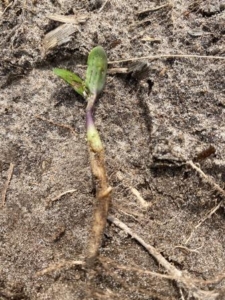

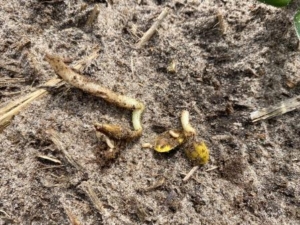
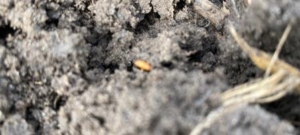
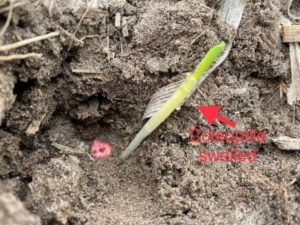
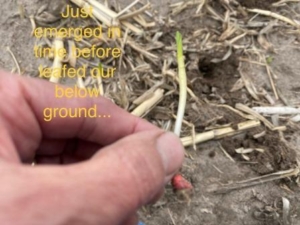
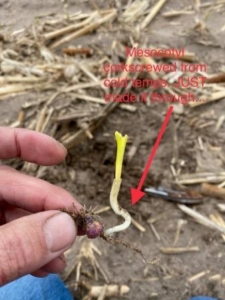
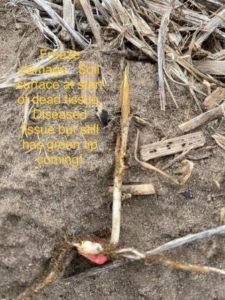
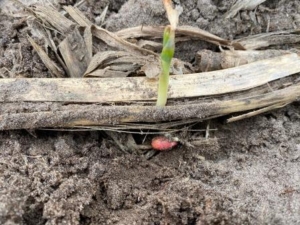
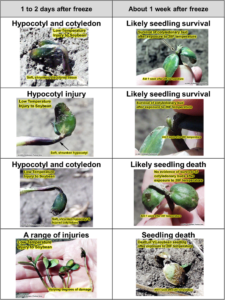
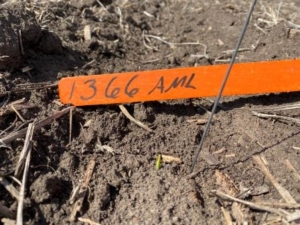
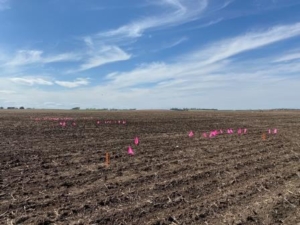
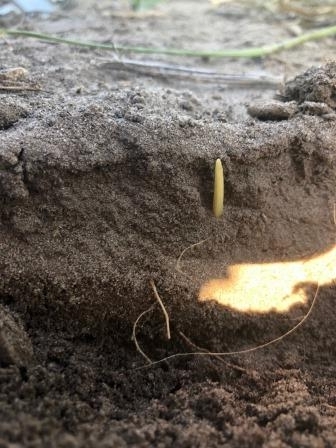
 I’m sure we can all relate to this comic strip….especially those who have children in the house ALL DAY…..
I’m sure we can all relate to this comic strip….especially those who have children in the house ALL DAY…..




